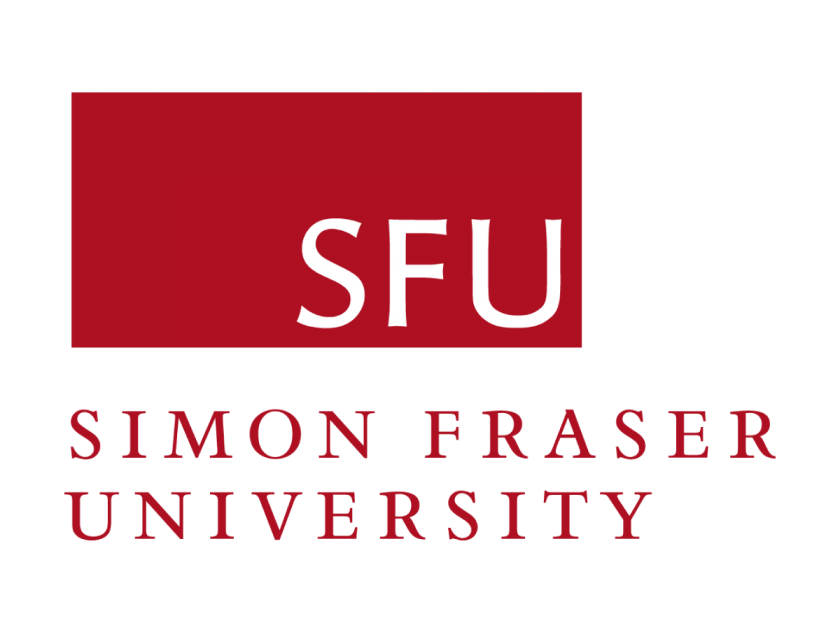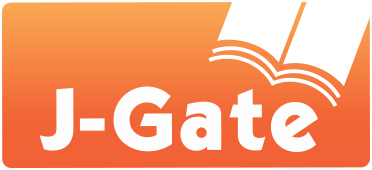Teaching EFL Vocabulary through Analyzing the Structure of Words Coupled with Using Crossword Puzzles
DOI:
https://doi.org/10.54855/ijte.25523Keywords:
mnemonics, word structure diagram, crossword puzzle, vocabulary acquisition, memoryAbstract
In the EFL milieu, plenty of studies have reported the usefulness of some vocabulary-building techniques. Among them, teaching incorporating either the crossword or mnemonics has been widely implemented in various language settings. Empirical evidence supports the value of such a teaching method. Nonetheless, using both the devices in tandem deserves attention and further investigation. In the current research, two groups of EFL majors in a junior college in Taiwan were recruited to receive either traditional lecture-based instruction or teaching aided by both the crossword and mnemonics. Data analysis demonstrates significant inter-group differences in the learning outcome, favorable to the latter group, and the questionnaire responses exhibit the students’ approval of this experimental technique. The findings of the research mean more to EFL teaching in Taiwan, as Mandarin Chinese, the medium of instruction in schools, is by far different from English, making it more difficult to learn English as L2.
References
104 Corporation. (2021). Global HRM & TOEIC. 104 Corporation.
Agnes, D., & Srinivasan, R. (2024a). Redefining the association between memory, mnemonics and vocabulary acquisition—Reviewing paradigms in research. Journal of Language Teaching and Research, 15(3), 697–706. https://doi.org/10.17507/jltr.1503.02
Agnes, D., & Srinivasan, R. (2024b). Fostering vocabulary memorization: Exploring the impact of AI-generated mnemonic keywords on vocabulary learning through Anki flashcards. World Journal of English Language, 14(2), 433–451.
Alda, J. N., & Wati, S. (2021). Enhancing learners’ vocabulary acquisition by crossword puzzle game. JL3T (Journal of Linguistics, Literature and Language Teaching), 7(1), 25–40. https://doi.org/10.32505/jl3t.v7i1.2820 2
Amiryousefi, M., & Ketabi, S. (2011). Mnemonic instruction: A way to boost vocabulary learning and recall. Journal of Language Teaching and Research, 2(1), 178–182. https://doi.org/10.4304/jltr.2.1.178-182
Ausubel, D. P. (1963). The psychology of meaningful verbal learning. Grune & Stratton.
Ayto, J. (1990). Dictionary of word origins. Arcade Publishing.
Burston, J. (2005). Theoretical foundations of crossword puzzle usage in foreign language vocabulary acquisition. In Conference paper published at UNTELE, Academia.
Chen, F., Kao, S. M., & Tsou, W. (2020). Toward ELF-informed bilingual education in Taiwan: Addressing incongruity between policy and practice. English Teaching & Learning, 44(2), 175–191. https://doi.org/10.1007/s42321-020-00055-1
Childers, C. D. (1996). Using crossword puzzles as an aid to study sociological concepts. Teaching Sociology, 24(2), 231–235. https://doi.org/10.2307/1318816
Chun, S. (2024). TOEIC® listening & reading test. Chun Shin Limited.
Dang, T. M. T., & Tong, T. M. H. (2024). Instruction-giving in EFL classrooms: A case of a university in Viet Nam. International Journal of TESOL & Education, 4(2), 46–61. https://doi.org/10.54855/ijte.24423
Davis, T. M., Shepherd, B., & Zwiefelhofer, T. (2009). Reviewing for exams: Do crossword puzzles help in the success of student learning? The Journal of Effective Teaching, 9(3), 4–10.
Derer, Ö. K., & Berkant, H. G. (2019). The effect of puzzle-based learning on secondary school students’ attitudes and their self-efficacy beliefs in English lesson. Journal of Theoretical Educational Science, 13(1), 205–231. https://doi.org/10.30831/akukeg.564792
Ellis, N. C. (1997). Vocabulary acquisition: Word structure, collocation, word-class, and meaning. In N. Schmitt & M. McCarthy (Eds.), Vocabulary: Description, acquisition and pedagogy (pp. 122–139). Cambridge University Press.
ETS. (2023). TOEFL iBT® test and score data summary 2022. https://www.ets.org/pdfs/toefl/toefl-ibt-test-score-data-summary-2022.pdf
Faraj, A. K. A. (2015). Scaffolding EFL students’ writing through the writing process approach. Journal of Education and Practice, 6(13), 131–141.
Farjami, H. (2007). Picture production and picture perception: comparing two modes of practicing concrete vocabulary. Iranian Journal of Applied Linguistics, 10(1), 1–15. https://www.researchgate.net/publication/340309877_3-1_1_picture_production_and_picture_perception
Gairns, R., & Redman, S. (1999). Working with words: A guide to teaching and learning vocabulary. Cambridge University Press.
Hong, L. (2022), Making a little progress your life will be different. Global Views – Commonwealth Publishing Group.
Huang, T. J. (2005). A research on learner retention and learning support. US-China Education Review, 2(1), 58–68.
Huang, Y. C. (2014). Formal vocabulary instruction in EFL context. Journal of National Formosa University, 32(2), 37-50. https://doi.org/10.6425/JNHUST.201412_32(2).0004
Hulstijn, J. (1997). Mnemonic methods in foreign language vocabulary learning: Theoretical considerations and pedagogical implications. In J. Coady & T. Huckin (Eds.), Second language vocabulary acquisition (pp. 203–224). Cambridge University Press.
Huyen, N. T. T., & Nga, K. T. T. (2003). The effectiveness of learning vocabulary through games. Asian EFL Journal, 5(4), 90–105.
Isangedighi, A. J. (1997). A comparison of study habits among the underachieving, the achieving and over-achieving junior secondary one students. West African Journal of Education Research, 1, 114–119.
Karami, A., & Bowles, F. A. (2019). Which strategy promotes retention? Intentional vocabulary learning, incidental vocabulary learning, or a mixture of both? Australian Journal of Teacher Education, 44(9), 25–43. https://doi.org/10.14221/ajte.2019v44.n9.2
Keshta, A. S., & Al-Faleet, F. K. (2013). The effectiveness of using puzzles in developing Palestinian tenth graders’ vocabulary achievement and retention. Humanities and Social Sciences, 1(1), 46–57. https://doi.org/10.11648/j.hss.20130101.16
King, K. B. (2010). The writing template book: The Michigan guide to writing well and success on high-stakes tests. The University of Michigan Press.
Krashen, S. D. (1985). The input hypothesis: Issues and implications. Longman.
Kurniarahman, I. (2023). Mnemonics and their effect on students’ vocabulary memorization and recall: A quantitative study. BATARA DIDI: English Language Journal, 2(1), 10–24. https://doi.org/10.56209/badi.v2i1.51
Le, H. S., & Trinh, M. L. (2024). An Investigation of Vocabulary Learning Strategies of ESP Students. International Journal of TESOL & Education, 4(1), 1–17. https://doi.org/10.54855/ijte.24411
Lestari, N., & Yulia, Y. (2018). The use of crossword puzzle to improve vocabulary mastery of the fifth grade students of SD N GOLO. JELLT, 2(2), 71–79. https://doi.org/10.36597/jellt.v2i2.3275
Li, Y. (2009). L2 learners’ attitudes to English vocabulary learning strategies. Kristianstad University.
Liao, Y. F. (2004). A survey study of Taiwan EFL freshmen’s vocabulary learning strategies. Journal of National Pingtung University, 21, 271–288.
Lipscomb, A., Swanson, J., & West, A. (2010). Scaffolding (Ch. 21). In M. Orey (Ed.). Emerging perspectives on learning, teaching, and technology (pp. 226–236). https://opentextbooks.uregina.ca/teachingdiverselearners/chapter/scaffolding-2/
Mauranen, A. (2010). Features of English as a lingua franca in academia. Helsinki English Studies, 6(6), 6–28.
Mayer, R. E. (2002). Rote versus meaningful learning. Theory into Practice, 41(4), 226–232. https://doi.org/10.1207/s15430421tip4104_4
Merkel, W. (2016). The potential of crossword puzzles in aiding English language learners. TESOL Journal, 7(4), 898–920. https://doi.org/10.1002/tesj.252
Ministry of Education. (2018). Curriculum guidelines of 12-year basic education for elementary school, junior high and general senior high schools: Subject of English in the domain of language. Ministry of Education.
Mustika, V., Yufrizal, H., & Huzairin. (2022). The use of crossword puzzle game to improve students’ vocabulary mastery. U-JET, 11(4), 306–311.
Nam, J. (2010). Linking research and practice: Effective strategies for teaching vocabulary in the ESL classroom. TESL Canada Journal, 28(1), 127–135. https://doi.org/10.18806/tesl.v28i1.1064
Nation, I. S. P. (1990). Teaching and learning vocabulary. Heinle & Heinle Publishers.
Nemati, A. (2009). Memory vocabulary learning strategies and long-term retention. International Journal of Vocational and Technical Education, 1(2), 14–24. https://doi.org/10.4314/marang.v20i1.56821
NICHD. (2000). A closer look at the five essential components of effective reading instruction: A review of scientifically based reading research for teachers. Learning Point Associates.
Njoroge, M. C., Ndung’u, R. W., & Gathigia, M. G. (2013). The use of crossword puzzles as a vocabulary learning strategy: A case of English as a Second Language in Kenyan secondary schools. International Journal of Current Research, 5(2), 313–321.
Orawiwatnakul, W. (2013). Crossword puzzles as a learning tool for vocabulary development. Electronic Journal of Research in Educational Psychology, 11(2), 413–428. https://doi.org/10.14204/ejrep.30.12186
Pillai, N. R. (2017). Using mnemonics to improve vocabulary, boost memory and enhance creativity in the ESL classroom. Melta, 1–25. https://www.journals.melta.org.my/TET/downloads/tet33_01_05.pdf
Puspita, N., & Sabiqoh, N. (2017). Teaching vocabulary by using crossword puzzle. English Education: Journal Tadris Bahasa Inggris, 10(2), 308–325. https://dx.doi.org/10.24042/ee-jtbi.v10i2.1753
Reader’s Digest. (1983). Super word power. Berkley Books.
Republic of China (Taiwan). (2018). Blueprint for developing Taiwan into a bilingual nation by 2030. Executive Yuan.
Richards, J. C., & Renandya, W. A. (Eds.). (2002). Methodology in language teaching: An anthology of current practice. Cambridge University Press.
Rüdiger, S., Leimgruber, J., & Tseng, L. (2023). English in Taiwan. English Today 153, 39(2). Printed in the United Kingdom. https://www.cambridge.org/core/journals/english-today/article/english-in-taiwan/DE7F4A0F324A661509D72C3A4622510B
Schmitt, N., & McCarthy, M. (Eds.). (1997). Vocabulary: Description, acquisition and pedagogy. Cambridge University Press.
Tran, Q. H., & Nguyen, T. M. (2022). Students' retention on online learning: Establishing a predictive model at a private university in Vietnam. International Journal of TESOL & Education, 2(4), 149–172. https://doi.org/10.54855/ijte.22249
Vu, T., Winser, W., & Walsh, J. (2020). Teacher attitudes towards the English language curriculum change: The case of Vietnam. TESOL International Journal, 15(6), 38–53.
Vygotsky, L. S. (1978). Mind in society: The development of higher psychological processes. Harvard University Press.
Wei, M. (2007). An examination of vocabulary learning of college-level learners of English in China. Asian EFL Journal, 9(2), 91–114.
Wilkins, D. A. (1985). Linguistics in language teaching. Edward Arnold.
Wood, D., Bruner, J., & Ross, G. (1976). The role of tutoring in problem solving. Journal of Child Psychology and Child Psychiatry, 17(2), 89–100. https://doi.org/10.1111/j.1469-7610.1976.tb00381.x
Yam News. (2023). eNews network. Yam News.
Yang, Y. C., & Wang, C. L. (2014). TOEIC 900 leisure & social network vocabulary practice. Bookman Publishers.
Yang, Y. C., & Wang, J. C. (2006). TOEFL-iBT 120: Reading and writing. The Jinni Publishing.
Yeh, C. Y., & Wang, Y. H. (2004). An investigation into vocabulary learning strategies used by senior high school students in Taiwan. Taiwan Journal of TESOL, 1(2), 1–44.
Zitouni, M., Zemni, B., Al-Traif, H., & Aljasser, M. (2021). Vocabulary learning strategy use among translation students in Saudi Arabia. TESOL International Journal, 16(4), 67–81.
Yunianta, A., Yusof, N., Othman, M. S., & Octaviani, D. (2012). Analysis and categorization of e-Learning activities based on meaningful learning characteristics. World Academy of Science, Engineering and Technology International Journal of Educational and Pedagogical Sciences, 6(9), 811–816.
Downloads
Published
Issue
Section
License
Copyright (c) 2025 Yu-Chi Yang

This work is licensed under a Creative Commons Attribution 4.0 International License.
The copyright of all articles published in the International Journal of TESOL & Education (ijte) remains with the Authors, i.e. Authors retain full ownership of their article. Permitted third-party reuse of the open access articles is defined by the applicable Creative Commons (CC) end-user license which is accepted by the Authors upon submission of their paper. All articles in the ijte are published under the CC BY-NC 4.0 license, meaning that end users can freely share an article (i.e. copy and redistribute the material in any medium or format) and adapt it (i.e. remix, transform and build upon the material) on the condition that proper attribution is given (i.e. appropriate credit, a link to the applicable license and an indication if any changes were made; all in such a way that does not suggest that the licensor endorses the user or the use) and the material is only used for non-commercial purposes.
Authors retain copyright and grant the journal the right of first publication with the work simultaneously licensed under a Creative Commons Attribution 4.0 International License that allows others to share the work with an acknowledgment of the work's authorship and initial publication in this journal.
Authors are able to enter into separate, additional contractual arrangements for the non-exclusive distribution of the journal's published version of the work (e.g., post it to an institutional repository, in a journal or publish it in a book), with an acknowledgment of its initial publication in this journal.











